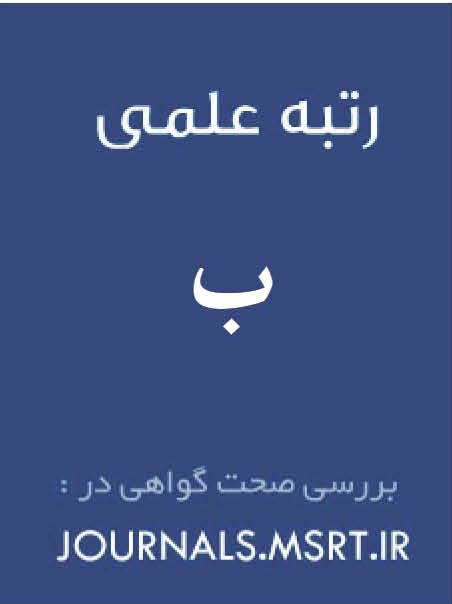Exploration of Various Types of Jari and Tatbiq in the Practical Conduct of Imam Ali (AS) and His Sons, Hasan and Husayn (AS)
Abstract
Jari and Tatbiq, as significant principles in the science of Qur’anic exegesis, serve as evidence of the Qur'an's vitality across different periods. The Imams (AS) employed these principles to elucidate truths, demonstrate instances that align with particular verses, interpret Qur'anic themes, and address various theoretical and practical circumstances. In some Imams (AS), particularly under unique social and political conditions, the practical application of verses and their alignment with specific situations or individuals became more prominent. Imam Ali (AS) and his sons, Hasan and Husayn (AS), effectively integrated the Qur'an into their practical conduct, aligning its verses with specific contexts as needed. Despite some differences, they utilized various forms of Jari and Tatbiq. This phenomenon is especially pronounced in the practices of Imam Ali (AS) and Imam Husayn (AS), while in the case of Imam Hasan (AS), apart from a few instances, most of the records pertain to traditions about Jari and Tatbiq. This study aims to identify the shared and distinct aspects of the Imams’ (AS) use of different types of Jari and Tatbiq. The research adopts a descriptive and analytical methodology.
Downloads
References
Abu al-Futuh Razi, H. I. A. (1987). Rawdh al-Jinan wa Ruh al-Jinan. Astan Quds Razavi.
Allama Hilli, H. I. Y. (1990). Kashf al-Yaqin fi Fadha'il Amir al-Mu'minin (AS). Ministry of Guidance.
Alusi, S. M. (1994). Ruh al-Ma'ani fi Tafsir al-Qur'an al-'Azim. Dar al-Kutub al-'Ilmiyyah.
Amili, A. I. H. (1993). Al-Wajiz fi Tafsir al-Qur'an al-Aziz. Dar al-Qur'an al-Karim.
Arbeli, A. I. I. (1985). Kashf al-Ghummah fi Ma'rifat al-A'immah (AS). Dar al-Adhwa.
Arusi Huwayzi, A. A. I. J. a. (1992). Nur al-Thaqalayn. Mu'assasat Isma'iliyan.
Ayashi, M. (2001). Tafsir al-Ayashi. Ilmiyyah Press.
Bahrani, A. (1986). Al-Awalam. Amir Publications.
Fayz Kashani, M. M. (1994). Tafsir al-Safi. Sadr Publications.
Furat, K. (1990). Tafsir Furat. Ministry of Culture and Islamic Guidance Publications, Mu'assasah for Printing and Publishing.
Ibn A'tham Kufi, A. (1985). Al-Futuh. Dar al-Kutub al-Islamiyyah.
Ibn, a.-M. (1983). Manaqib Amir al-Mu'minin (AS). Maktabah al-Islamiyyah.
Ibn Ashur, M. T. (1999). Al-Tahrir wa al-Tanwir. Mu'assasat Tarikh al-Arabi.
Ibn Atiya, A. I. G. (2001). Tafsir al-Muharrar al-Wajiz. Dar al-Kutub al-'Ilmiyyah.
Ibn Babawayh, Q. (1996). Al-Amali. Mu'assasah Ba'that.
Ibn Shahr Ashub, M. (1959). Manaqib Aal Abi Talib. Allameh Publications.
Jalali Kandari, S. (2011). Types of Interpretive Narrations by Imam Sajjad (AS) in Identifying Instances. Journal of Quran and Hadith Studies(2).
Jawadi Amoli, A. (1999). Tafsir Tasnim. Isra Publications.
Jazairi, N. m. (1968). Uqud al-Marjan fi Tafsir al-Qur'an. Nur Wahy.
Karimi Jahromi. (2011). Imam Husayn (AS) as a Reflection of Quranic Verses. In th (Ed.), Imam Husayn (AS) and Quran Collection of Articles. Bustan al-Kitab.
Khatib, A. (2001). Al-Tafsir al-Qur'ani lil-Qur'an. Dar al-Kutub al-Arabi.
Kulayni, M. I. Y. q. (1986). Al-Usul al-Kafi. Dar al-Kutub al-Islamiyyah.
Ma'rifat, M. H. (2012). Tafsir wa Mufassirun. Tamhid Publications.
Majlisi, M. B. (1983). Bihar al-Anwar. Mu'assasat al-Wafa'.
Makarem Shirazi, N. (1992). Tafsir Nemooneh. Dar al-Kutub al-Islamiyyah.
Maraghi, A. a.-M. Tafsir Maraghi. Dar al-Fikr.
Muqarram, S. A. a.-R., & Aqighi, B. (2006). Maqtal Muqarram. Nawid-e Islam Publishing.
Najmi, M. S. (2003). Sokhanan Husayn Ibn Ali (AS) az Madinah ta Karbala. Bustan al-Kitab.
Namazi, A. (1998). Mustadrak Safinah al-Bihar. Islamic Publications Office.
Neyshabouri, H. I. M. (1995). Tafsir Gharayeb al-Qur'an. Dar al-Kutub al-'Ilmiyyah.
Noraei, M. (2011). Examining the Interpretive Rule of Jarri and Tatbiq with Emphasis on Its Use in the Seerah of Ahlul Bayt (AS). Quranic Teachings Journal(14).
Qara'ati, M. (2004). Tafsir Noor. Center for Publishing Quranic Lessons.
Qomi, A. Safinah al-Bihar. Dar al-Murtadha.
Qomi Mashhadi, M. M. (1989). Kanz al-Daqa'iq wa Bahr al-Ghara'ib. Dar al-Ghadir.
Qurayshi, A. A. (1996). Ahsan al-Hadith. Foundation of Ba'that, Printing and Publishing Center.
Qurtubi, A. A. (1984). Al-Jami' li Ahkam al-Qur'an. Dar al-Kutub al-Misriyyah.
Qutb, S. (2004). Fi Zilal al-Qur'an. Dar al-Shorouk.
Sabzevari, M. (1998). Irshad al-Adhhan ila Tafsir al-Qur'an. Dar al-Ta'aruf lil-Matbu'at.
Sadeqi Tehrani, M. (1985). Al-Furqan fi Tafsir al-Qur'an. Office of Islamic Culture Publications.
Salimi Zare, M. (2013). The Role of Interpretive Rules in the Quran's Interpretation Process. Quarterly Journal of Quranic Research(1).
Shah Abdul Azimi, H. (1984). Tafsir Ithna 'Ashari. Miqat.
Sheikh Mufid, M. Al-Irshad. Dar al-Mufid.
Shubbar, A. (1986). Al-Jawhar al-Thamin fi Tafsir al-Kitab al-Mubin. Maktabah al-Alfayn.
Suyuti, J. a.-D. (1995). Tafsir al-Jalalayn. Mu'assasat al-Nur lil-Matbu'at.
Tabari, M. I. J. Tarikh al-Muluk wa al-Umam. Mu'assasat al-A'lami.
Tabarsi, F. I. H. Translation of Majma' al-Bayan. Farahani Publications.
Tabarsi, F. I. H. (1993). Majma' al-Bayan. Naser Khosrow Publications.
Tabataba'i, S. M. H. (1970). Al-Mizan fi Tafsir al-Qur'an. Mu'assasat al-A'lami lil-Matbu'at.
Tabataba'i, S. M. H., & Mousavi Hamadani, M. B. (1996). Al-Mizan fi Tafsir al-Qur'an. Jami'ah-e Mudarrisin.
Tusi, M. (1969). Ikhtiyar Ma'rifat al-Rijal (Rijal Kashi). University of Mashhad.
Tusi, M. I. H. Al-Tibyan fi Tafsir al-Qur'an. Dar Ihya' al-Turath al-Arabi.
Vahdati Shabiri, S. Z. (2013). Analysis of Typology of Interpretive Narrations of Ma'sumin (AS). Hadith Andisheh Journal(15).
Zamakhshari, M. (1986). Al-Kashaf. Dar al-Kutub al-Arabi.
Zuhayli, W. (1990). Al-Tafsir al-Munir. Dar al-Fikr.
Downloads
Published
Submitted
Revised
Accepted
Issue
Section
License
Copyright (c) 2024 Islamic Knowledge and Insight

This work is licensed under a Creative Commons Attribution-NonCommercial 4.0 International License.








